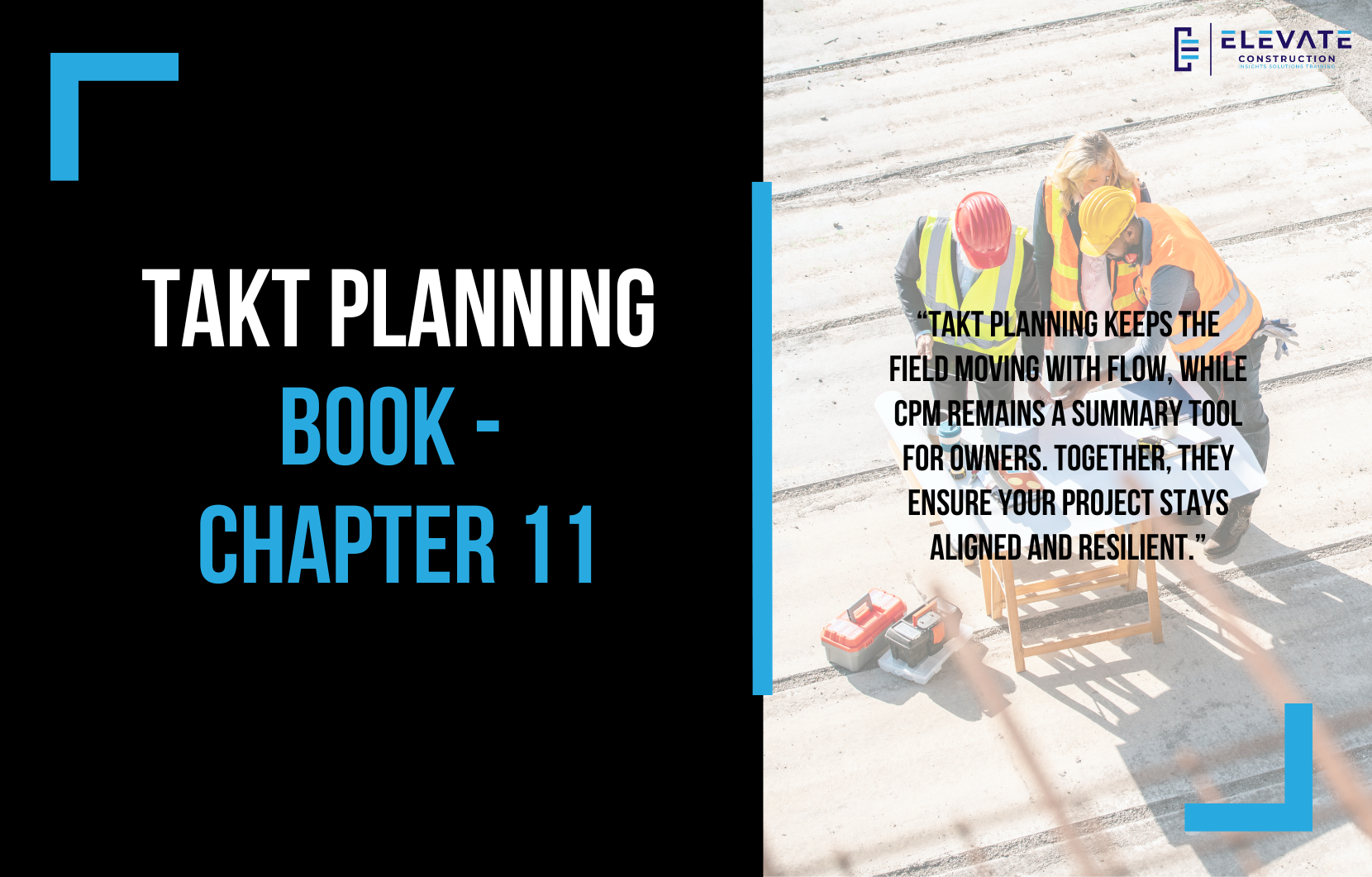The Path of Critical Flow in Construction Scheduling
One of the most powerful concepts in Takt planning is the Path of Critical Flow (PCF). Understanding this path is essential to maintaining project control, verifying schedules, and properly addressing delays.
The PCF is essentially the longest path in a Takt plan, running through phases and phase connections. It links milestones, sequences, buffers, and interdependencies all the way from project start to completion. Getting this right ensures your project stays on track and that you can properly justify extensions of time when necessary.
Breaking Down the Path of Critical Flow
Here’s how to verify and build a solid PCF:
- Start Milestone
The earliest milestone kicks off the first activity sequence. This sequence can be validated through pull planning, ensuring durations and order are accurate.
- Sequence
Created by first or last planners, each sequence should be checked using production rates and supported by pull plans.
- Line of Balance
The Line of Balance ensures flow through phases:
- Macro-level plans: Realized Flow Potential (RFP) should be 35–50%.
- Norm-level plans: RFP should be 50–100%.
This verifies that trade crews are moving at a reasonable speed.
- Buffers
Each phase must include a buffer to absorb risk. Buffers can also be consolidated at the end of the overall project schedule but must remain represented in the plan.
- Interdependence Ties
These ties connect phases and activities into a network. They represent dependencies and must be intentional and accurate.
- End Milestone
The final milestone signals project completion, marking the last link in the PCF.
Why It Matters
Piecing the PCF together correctly enables you to:
- Maintain realistic project durations.
- Verify project schedules.
- Properly submit and justify time extensions.
When a delay occurs, the PCF allows you to assess whether it can be absorbed or if it legitimately impacts the end date. If it does, follow this process:
- Confirm your Takt plan is current.
- Identify the delay’s impact.
- Explore recovery options.
- If recovery is exhausted, submit a time impact analysis.
- Justify the findings in discussions with the owner.
CPM vs. Takt Planning
While CPM (Critical Path Method) may still be required, it should be used at a very high level only (Level 1 or 2). Takt planning is far superior for managing actual work in the field, guiding superintendents and foremen with clear deliverables. CPM, in this context, becomes a summary tool for owners.
Procurement and Buffers
A strong procurement system is critical to align materials, equipment, and approvals with the PCF. This requires:
- Submittal and fabrication timelines.
- Buffers at both the inventory and supply chain level.
- Conditional formatting to flag late or at-risk items.
- Zone based and work-package-based breakdowns.
When delays happen, strategies like swarming reviews, negotiating with vendors, or supplementing contractors can help mitigate risks. Ultimately, supply chain buffers must match the buffers within your project phases to keep everything aligned.
Key Takeaway
The Path of Critical Flow is the backbone of reliable construction scheduling. By defining milestones, validating sequences, maintaining buffers, and aligning procurement, you gain the ability to manage projects proactively and defend against unreasonable delay claims. Takt planning keeps the field moving with flow, while CPM remains a summary tool for owners. Together, they ensure your project stays aligned and resilient.
If you want to learn more we have:
-Takt Virtual Training: (Click here)
-Check out our Youtube channel for more info: (Click here)
-Listen to the Elevate Construction podcast: (Click here)
-Check out our training programs and certifications: (Click here)
-The Takt Book: (Click here)
Discover Jason’s Expertise:
Meet Jason Schroeder, the driving force behind Elevate Construction IST. As the company’s owner and principal consultant, he’s dedicated to taking construction to new heights. With a wealth of industry experience, he’s crafted the Field Engineer Boot Camp and Superintendent Boot Camp – intensive training programs engineered to cultivate top-tier leaders capable of steering their teams towards success. Jason’s vision? To expand his training initiatives across the nation, empowering construction firms to soar to unprecedented levels of excellence.
On we go

